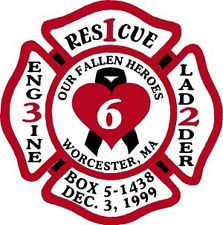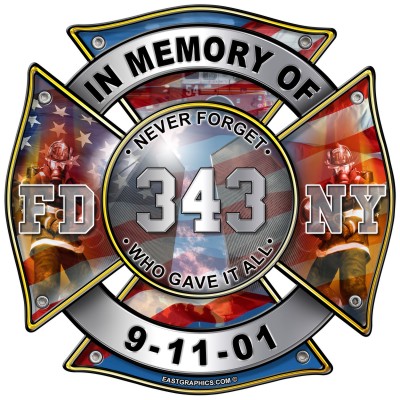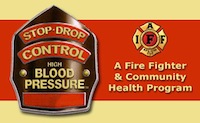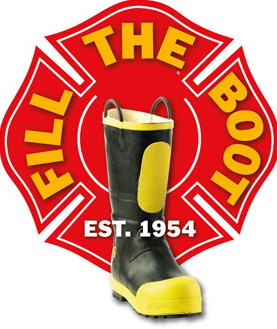"An ounce of prevention is worth more than a gallon of suppression"
--Deputy Fire Chief James S. Harrington
The primary mission of the Bureau of Fire Prevention is to provide the highest degree of fire and life safety protection and education to the public as applicable by state law.
| What We Do |
|
|
The Bureau of Fire Prevention is responsible for providing fire and life safety protection to the public by ensuring fire code compliance and enforcement of the Fire Prevention Laws, Regulations, and Building Codes. Two major functions of the Bureau are the review of engineered building plans for all life safety systems and the inspection and testing of any installation, alteration, modification, or repair to any fire alarm, sprinkler or suppression system. Additional responsibilities include:
- Issuance of permits as mandated by MGL Chapter 148; 527CMR (Board of Fire Prevention Regulations); and 780CMR (Massachusetts State Building Code).
- Administer the state mandated inspection program conducted by fire suppression personnel for public and private schools, hospitals, hotels, clinics, day care centers, theaters and nursing homes.
- Administer the residential smoke detector compliance law and supervise the smoke detector inspection program conducted by fire suppression personnel.
- Conduct inspections for the issuance of Certificate of Occupancy and Smoke Detector Certifications.
- Conduct inspections as required by the City of Cambridge License Commission
- Administer the Fire Detail program as required for public safety.
- Administer and perform inspections of the state mandated fuel storage tank regulations.
- Administer the annual flammable storage permits and supervise the inspection by suppression forces.
- Provide the necessary resources required for public events.
- Perform inspections of restaurants and nightclubs as part of the City Managers License Task Force.
- Investigate and mitigate complaints received from the public, other city agencies, and the fire suppression forces that involve fire hazard and life safety code violations.
- Administer the Safe Program which provides fire education to the grammar schools.
- Administer the life safety education programs for the elderly housing and high-rise buildings.
The Bureau of Fire Prevention reports directly to the Chief of Department. The division is staffed with one Deputy Chief, two Fire Captains and one Fire Lieutenant. The SARA Title III Officer performs additional fire prevention duties such as public relations and education, and coordinates of fire prevention week activities.
|
| How To Reach Us |
|
|
Our office is located at Fire Department Headquarters, 491 Broadway
(corner of broadway and cambridge streets)
Office hours are Monday through Friday 8am – 4pm. (Except holidays)
Permits are issued from the permit counter located on the second floor. Payment is made by cash or check. Please make checks payable to the City of Cambridge.
Fire Inspections are by appointment only. Please call the following numbers to schedule a fire inspections:
-
Smoke Detector Compliance Inspection, please call (617) 349-4921
-
Certificate of Occupancy and all other inspections, please call (617) 349-4918
Important: If a Certificate of Occupancy Inspection is required in addition to a Smoke Detector Compliance Inspection, please call the Fire Prevention Office at (617) 349-4918. Both inspections will be done together.
|
| Home Fire Safety Tips |
|
|
Home Fire Safety Tips
Install Smoke Detectors; Test Monthly; and Replace Batteries Annually
Make and Practice Your Home Escape Plan
Check Your Plan!
• Does everyone know two ways out of each room? The first way is probably a door and the second way out might be a window or another door.
• Do all windows and doors needed for escape open easily?
• Have you chosen a meeting place out front where everyone will meet? You want to be able to tell the fire department that everyone is out safely.
If a Fire Does Occur:
• Stay out; Don't go back inside a burning building for anything or anyone. Let the fire department do that! They have the training and the protective equipment.
• Call the fire department from a neighbor’s house or use the fire alarm call box.
Keep Your Kitchen Fire Safe or Stand By Your Pan!
- Kitchen fire safety starts with the cook! Wear short or tight fitting sleeves when cooking. Never leave cooking unattended, but if you must leave the kitchen for a moment, turn the surface burners off. Stand by your pan! Keep small appliances unplugged when not in use and keep them clean and dry. If a small grease fire occurs, use the "Put A Lid On It" technique. Smother the flames by sliding a cover or larger pan over the fire and turn off the burner; never pour water on a grease fire or move the burning pan. If the fire does not go out instantly, leave the house and call the fire department. Cooking fires can quickly get out of control!
Winter Seasonal Fire Safety Tips:
Fall Seasonal Fire Safety Tips:
Change Your Clock
Change Your Battery
As we go into the high fire season, when you change your clock, make another change. A change that could save your life--the battery in your smoke detector! A working smoke detector alerts you and your family during the early stage of a fire while you still have time to make a safe exit. So, the next time you Change your clock...Change your battery!
Exercise Caution
When Storing Newspapers
Recycle, but always be careful to store newspapers in a cool, dry place at least three feet away from any heat-generating devices. Newspapers can generate heat and ignite themselves; therefore, they should never be stored in a warm, damp area.
Prevent Dryer Fires
-
Clothes dryers are a leading cause of fires in homes, hotels and motels, and hospitals.
-
Clean the filter screen after each load.
This will keep the vent clear. When accumulated lint clogs the vent, the dryer can overheat and a fire could result.
-
Stay home while the dryer is in use.
Turn off the dryer before leaving the house.
-
Clean vents to the outside:
Twice a year you should clean the hose pipe that vents to the outside. Use a vacuum cleaner to suck out accumulated lint and dust.
-
Vacuum the motor area.
The dust and lint in the vent pipe can ignite if it gets hot enough. Vacuum the motor area if you can get to it. You may have to remove a panel to get at it.
-
Clean commercial dryers regularly.
Commercial dryers get a lot of use and will have a common venting system. It is extremely important to have the vent systems cleaned regularly.
CO
Carbon Monoxide
-
Carbon monoxide is the product of the incomplete combustion. It is odorless and colorless and is highly toxic. Carbon monoxide is a flammable and potentially explosive gas. The effects of carbon monoxide range from a mild headache to lethargy and confusion, unconsciousness, and death.
-
Causes of carbon monoxide in a building can include improper combustion or improper ventilation of furnaces fueled by natural gas or oil, water heaters, fireplaces, wood burning stoves, or even from fumes from an automobile running in a garage or in close proximity to a building. A blockage in a chimney or flue pipe can cause carbon monoxide accumulation. Carbon monoxide will also be generated by the extremely dangerous practice of using barbecues, portable stoves, or portable heaters inside a building.
-
The danger of carbon monoxide is that this insidious gas will starve oxygen from the body. Carbon monoxide can not be detected by the human nose or other senses. The symptoms or carbon monoxide poisoning can be similar to flu symptoms, as well as headaches, fatigue, nausea, shortness of breath, weakness, vision problems, and loss of muscle control and motor coordination. If a person is left untreated in a heavy accumulation of CO, unconciousness and death can result. If the symptoms disappear when you are away from the house, suspect the presence of carbon monoxide. Symptoms may vary according to the individual.
-
If you suspect carbon monoxide contamination, get everyone outside immediately. Call the Fire Department via 911 (using a telephone away from the suspected area) and report any medical symptoms and the possibility of carbon monoxide contamination. The Fire Department will respond immediately to provide medical care if needed and to test the building for carbon monoxide contamination by the use of air sampling meters. Remember that carbon monoxide is odorless and colorless and can only be positively identified by sophisticated air sampling and detection equipment.
Gas Barbecue Grill Safety Concerns:
-
Propane is a flammable gas stored under pressure.
-
Leaking propane can cause a fire or explosion if the propane reaches an ignition source.
-
Rapidly heated cylinders can also explode in a fire situation.
-
Never take a propane tank inside any building or dwelling, even momentarily.
-
Never store or use propane in any building, garage, or enclosed space.
-
Propane vapors are heavier than air. The vapors will flow into low areas such as cellars, sumps, and window-wells.
-
If there is a gas leak or uncontrolled fire, evacuate the area. Call the fire department from a telephone remote from the leak such as from a neighbor's house or from a cell phone or pull the nearest street fire alarm box.
-
Always keep tanks standing upright.
-
If a propane grill were to be used:L
Place grill on a noncombustible surface only at grade level.
Make sure that the grill is at least 10 feet from any combustible surfaces such as buildings, walls, deck railings, and vehicles.
Make sure that the grill is at least ten feet from any possible ignition sources such as air conditioners, lights, or cars.
Do not allow anyone to smoke when working with a propane tank.
Keep children and pets away from the grill.
Keep the propane tank shut off when not in use.
Store the propane tank in a shaded area. Heat from sunlight will cause the gas to expand and vent from the tank.
Periodically check all connections to make sure that they are secure and that there are no leaks.
When transporting a propane tank for refilling, do not leave it inside an enclosed car or trunk because the gas will vent automatically when it is heated or warmed.
Keep all hoses and connections free from spilled food, grease, and dirt.
FOR ANY GAS LEAK OR FIRE EMERGENCY
Fire Safety Tips courtesy of
Commonwealth of Massachusetts - Office of the State Fire Marshal, Stephen D. Coan
and
the Cambridge Fire Department, Fire Chief Gerald R. Reardon
|
| Certificate of Occupancy Info |
|
|
A Certificate of Occupancy is required by Inspectional Services for each building permit issued. A Certificate of Occupancy shall not issue until the building official and the fire official have witnessed a satisfactory functional test of all fire protection systems installed in accordance with the approved fire protection documents. To schedule a Certificate of Occupancy inspection, please call the Fire Prevention Office at (617) 349-4918.
Certificate of Occupancy inspections are done M-F 10:30am and 13:30pm. The following documents are required for a Certificate of Occupancy sign-off and are required to be presented to the inspector at the time of the inspection:
-
Certificate of completion from the Registered Professional Engineer
-
Test, Performance, and Completion Certificates from the installing contractors
-
General Contractors: To avoid any delays in obtaining a Certificate of Occupancy inspection, please ensure that all sub-contractor work has been completed and that all test reports and completion certificates are ready for submittal.
Sub-Contractors: The request for a c/o must be made by the contractor who is responsible for closing out the building permit. If you are a fire sprinkler, fire alarm, and/or fire suppression sub-contractor, please inform the general contractor that you are ready for inspection.
|
| Building Evacuation Plan Info |
|
|
Evacuation planning is regulated by 527CMR § 10:13 Emergency Planning and Preparedness. The administration of every facility shall have in effect and available to all supervisory personnel written copies of a plan for the protection of all persons in the event of fire and for their evacuation to areas of refuge and from the building when necessary.
The Fire Department assists in the development of emergency evacuation planning for all high-rise, schools, hospitals, medical facilities, and city owned buildings. For more information on evacuation planning, please call the fire prevention office at (617) 349-4965.
|
| False Alarm Billing Info |
|
|
The fees structure for fire department responses is established by Cambridge Municipal Ordinance Section 2.48.180 - Fee for false alarms. http://bpc.iserver.net/codes/cbridge/index.htm
False alarm fees are calculated on a six month basis. If the fire department responded to your property more than three times in a six month period, and the cause of the response was due to a faulty or non-maintained alarm system, a fee for the additional responses will be charged against your property. For information or questions regarding a bill you have received for false alarms, please contact the billling office at (617) 349-4924.
Section 2.48.180 Fee for false alarms.
A. Regarding buildings which have an AFAS connected directly to the Fire Department or connected indirectly to said Department through a private alarm company, a fee will be charged by the Fire Department for all responses by the Department to such buildings, where the response is caused by the activation of the AFAS, and the fee may be assessed against the owner or tenant of the building. No fee will be charged in the following circumstances:
1. Where the AFAS was activated by an actual fire.
2. Where the AFAS was activated by smoke from a source such as burning food or an overheated motor or overheated electrical appliance or other equipment.
3. Where someone, with reasonable cause, activates a manual pull station.
B. No fee will be charged for the first three responses in any six-month period, i.e. any period between January 1st and June 30th or between July 1st and December 31st. After the third response in any six-month period, the following fees will be assessed for subsequent responses within that period:
Fourth response $ 50.00
Fifth response $75.00
Sixth response $100.00
Seventh response $150.00
Eighth and subsequent responses $200.00
(Ord. 1110 (part), 1990)
|
| Carbon Monoxide(CO) Detection |
|
|
MGL Chapter 148 Section 26F 1/2 "Nicole's Bill"
"An Act Relative To The Installation Of Carbon Monoxide Alarms And Smoke Detectors In Residential Buildings."
MGL 26F 1/2 was enacted on November 4, 2005. The law requires that every dwelling, building or structure including those owned by the Commonwealth, occupied in whole or in part for residential purposes and that (1) contain fossil fuel burning equipment or (2) incorporate closed parking within its structure, be equipped by the owner with approved carbon monoxide alarms in conformance with the requirements of the Board of Fire Prevention Regulations.
Some highlights of the law include:
-
Landlords must inspect, maintain, and replace, if necessary, required carbon monoxide alarms at the beginning of any rental period.
-
The Department of Public Health is required to adopt and enforce this requirement on landlords as part of the State Sanitary Code.
-
Every affected residential dwelling, building or structure shall be inspected by the fire department upon sale or transfer.
-
The effective date of compliance is January 1, 2007 for all hardwired occupancies and March 31, 2006, for all non-hardwired occupancies.
The Board of Fire Prevention Regulations has drafted CMR 31- Carbon Monoxide Alarms. Please note that the carbon monoxide alarm requirements for certain sidewalled gas fueled equipment installations required by the State plumbing code, remain in full effect and are not affected at this time by the passage of Nicole's law (see 248CMR 5.08). For more information, please see the Fire Marshals advisory "Revised Emergency Gas Code Regulation"
Carbon monoxide (CO) is a colorless, odorless, poisonous gas that results from incomplete burning of fuels such as natural gas, propane, oil, wood, coal, and gasoline. Each year many people die from accidental CO poisoning and thousands more are injured.
The first symptoms of CO poisoning are similar to the flu (but without the fever). They include: headache; fatigue; shortness of breath; nausea; and dizziness.
If you think you have symptoms of carbon monoxide poisoning or your CO alarm is sounding, CALL 911 and leave the building immediately.
Please click the following links for additional information:
|
| CO Detector Installation |
|
|
Provisions of New Regulations for CO Detectors
For buildings with fossil-fuel burning equipment or enclosed parking areas, the new regulations require carbon monoxide detectors on every level of the home and within ten feet of each sleeping area and in habitable portions of basements and attics. The CO detectors may be:
- Battery operated with battery monitoring; or
- Plug-ins with battery back-up; or
- Hard-wired with battery backup; or
- Low voltage system; or
- Wireless, or
- Qualified combination (smoke/carbon monoxide alarm)
Acceptable combination smoke detectors and carbon monoxide alarms must have simulated voice and tone alarms that clearly distinguish between the two types of emergencies. The State Building Code mandates that only photoelectric combination alarms are permitted within twenty feet of a bathroom or kitchen.
All affected residences must install approved carbon monoxide alarms by March 31, 2006, although, where hard-wired systems are required, the deadline is January 1, 2007.
Alternative Compliance Options
The regulations allows for alternative compliance options that may be more practical for larger buildings with multiple dwelling units that contain minimal or no sources of CO inside the individual units. The option allows owners to target the CO alarm protection only in those areas that could be potential sources of the CO. Examples include rooms that contain boilers, hot water heaters, central laundry areas and all adjacent spaces, in addition to enclosed parking areas. This CO protection option requires hard or low voltage wiring, monitoring and certain signal transmission requirements. The deadline for compliance with this method of protection is January 1, 2007.
Important: If the apartments utilize a fossil-fueled appliance (gas stove or fireplace), a carbon monoxide detector is still required to be installed within the unit by March 31, 2006 even if you decide to choose the alternative compliance.
Permit Required: Any owner who chooses the Alternative Compliance Option must obtain a State Fire Marshal Form 7D Permit from the Fire Prevention Office.
Please note the following changes to the regulation
effective 12-7-06:
-
Effective 1-1-2008 all hotels, hospitals, nursing homes, prisons and day cares are required to install carbon monoxide detection. Different installation requirements apply. Please contact the FIre Prevention Office for additional information (617) 349-4968.
Landlords Must Inspect Annually and at Start of Each Rental Period
Landlords must inspect, maintain, and replace, if necessary, required CO alarms annually and at the beginning of any rental period. Tenants should report any problems with detectors to the landlord immediately and learn to recognize the difference between the smoke alarm and the carbon monoxide detector.
Enforcement
The Department of Public Health is required to adopt and enforce this requirement on landlords as part of the State Sanitary code.
Fire departments are currently required to inspect smoke alarms when one-five unit homes are being sold and transferred. Starting March 31, 2006 (or January 1, 2007 where hard-wired are required) fire departments will be required to inspect all residences upon sale and transfer for carbon monoxide detectors. Maximum fees for separate or joint inspecting of CO alarms and smoke detectors are $50.00 for single-family homes or units (i.e. condo), $100.00 for 2-family dwellings, $150.00 for 3-6 unit dwellings and $500.00 for 6 or more unit buildings.
Additional CO alarm requirements for certain transient residential buildings such as hotels and motels are being developed, in addition to requirements for certain institutional buildings. It is anticipated that the regulations for these types of buildings will be promulgated in the very near future in order to meet the statutes January 1, 2007 deadline.
|
| Smoke/CO Detector Permit Info |
|
|
Sale Of Property - Smoke/Carbon Monoxide Detector Certificate
How To Obtain A Certificate For Existing Buildings
-
Inspections must be scheduled in person at Fire Headquarters, 491 Broadway. The permit counter is located on the second floor. (Handicap access obtained via the Emergency Communications Center)
-
Permit Application Hours: M-F 8:00am - 4:00pm (except holidays).
-
The fees for Smoke / Carbon Monoxide Detector Inspections are as follows:
$50.00 for a single dwelling unit being sold
$100.00 for two dwelling units being sold
$150.00 for three to six dwelling units being sold
$500.00 for seven or more dwelling units
(Note: If you are selling 1 unit in a multi-apartment building, the single dwelling unit fee is applicable. The inspection fees cover both the smoke and carbon monoxide detector inspections)
-
Payment can be made by cash or check (make checks payable to the City of Cambridge).
Please note: Inspections for single to five unit dwellings are done on Tuesday and Thursday between 9:30 and 10:30 by local fire companies. Inspections for six or more dwelling units are done by the FIre Prevention Office. Please contact the Fire Prevention Office directly at (617) 349-4918.
Important: one to five unit inspections are performed by local fire companies and rescheduling may be necessary due to emergency fire calls. Inspections are subject to rescheduling without notice. Please leave a contact phone number when scheduling the inspection. If the inspection is not done by 10:30am, please call (617) 349-4921 for information.
How To Obtain A Certificate For New Construction Or Renovated Buildings
If the building or unit has been newly constructed or renovated and is going to be sold, a Certificate of Occupancy issued by Inspectional Services will be required. A Smoke / Carbon Monoxide Inspection Certificate will be issued upon a satisfactory Certificate of Occupancy inspection. Please contact the Fire Prevention Office at (617) 349-4918. Both inspections will be done at the same time.
Buildings To Be Sold That Will Be Renovated And Not Occupied
If upon the sale of the property the building is going to be renovated; is not going to be occupied; and new fire/smoke alarms and carbon monoxide detectors will be installed, a Smoke / Carbon Monoxide Inspection Certificate can still be issued. A notarized waiver application must be filled out and submitted to Fire Headquarters. Click here to download the Smoke / Carbon Monoxide Detector Certificate Waiver Application.
|
| MGL 148 26G1/2 Sprinkler Bill |
|
MGL Chapter 148 Section 26G 1/2
Chapter 304 Of The Acts Of 2004
"An Act Relative To Fire Safety In The Commonwealth"
As a result of the horrific Station Nightclub fire that occurred in West Warwick, Rhode Island on February 20, 2003, the Massachusetts Legislature has passed, and the Governor has signed into law, Chapter 304 of the Acts of 2004 - "An Act Relative To Fire Safety In The Commonwealth". With 100 dead and almost 200 injured, it was the fourth deadliest nightclub fire in U.S. history.
This new law requires and gives statutory authority to the Head of the Fire Department to enforce the installation of automatic sprinklers and other fire protection systems in certain places of public assembly (a) in existence as of the effective date the law was enacted (November 15, 2004) or (b) buildings or structures for which an approved building permit was issued before December 1, 2004.
In brief, every building or structure, or portions thereof, of a public assembly with a capacity of 100 persons or more, that is designed or used for occupancy as a nightclub, dance hall, discotheque, bar, or for similar entertainment purposes shall be protected throughout with an adequate system of automatic sprinklers by November 15, 2007. Sprinkler plans and specifications shall be submitted to the Head of the Fire Department and local building inspector no later than May 15, 2006.
There are provisions in the law that provide for time extensions, financial incentives, and an appeals process. The law also has specific exemptions for certain existing establishments.
If you are a club owner, manager, licensee, or the owner of a property that includes any bars, nightclubs, dance halls, restaurants, churches, private clubs, place of public assembly in the City of Cambridge, it is strongly recommended that you read the full text of the law and the additional information that is being provided by the Department of Fire Services and the Cambridge Fire Department.
A full copy of the law and the additional information can be downloaded from the Department of Fire Services web site at www.mass.gov/dfs
|
| S.A.F.E. Program |
|
|
Under the supervision of the fire prevention office, fire department members actively participate in the Student Awareness of Fire Education Program. This successful program teaches fire safety education to grades K-3 in all public and private schools in the City of Cambridge. For information on participating in the program, please contact the fire prevention office at (617) 349-4965.
Additional information can be found at http://www.mass.gov/dfs/osfm/pubed/safe/index.htm
|
| Flammable Storage/License Info |
|
|
Unless otherwise exempt by CMR 527 (Board of Fire Prevention Regulations), a permit is required by any owner, tenant, lesee, or business to store and use flammable liquids and gases. If the quantities exceed the permitted amounts set forth in CMR 527, then a license is required to be obtained by the owner of the property where the flammables are stored or used (MGL 148 Section 13).
Due to the complicated text of the laws and codes, flammable storage permitting can be a confusing and frustrating process. To explain, Massachusetts General Law requires a license be issued for any person storing or using flammable liquids on their property (MGL 148 § 13). However, the law also allows the Board of Fire Prevention Regulations (527CMR) to exempt certain businesses, operations, and amounts of flammables to be stored or used not to require a license as long as a permit has been issued by the local fire department (527 CMR § 14). This is called the annual flammable storage permit. Furthermore, the Board of Fire Prevention Regulations may also regulate the amount of flammables that can be stored or used without a license specifically for the use intended. Fuel oil storage for oil burners, for example, is regulated by 527 CMR section 4 and not section 14. Lastly, if a request (to the fire department) for flammable storage permit exceeds the exempt amounts, then a license from the Cambridge License Commission (not the fire department) is required.
To simplify, in order to store or use any flammable materials, a permit must first be issued by the head of the fire deparment. The permit is generally issued to the person or business that occupies the property. In properties with multiple tenants, a separate permit is required for each tenant located within that property. Whether a single permit or multiple permits have been issued for a property, once the exempt amounts listed in 527 CMR Section 14 have been exceeded, then a license, in addition to the permit(s), is required. The license must be applied for by the owner of the land and only one license can be issued per parcel of land (MGL 148 § 13). Follow the License Commission guidelines to obtain a license.
Fire Department fuel storage permits must be renewed April 30 each year. It is helpful if you send a copy of your current permit with payment to the fire prevention office prior to the expiration date. Please note any change of information or strorage/use amounts when applying for the new permit. Once the payment has been processed, an inspection of the property will be made by the fire department. Important: In some instances the renewal/inspection process may extend beyond April 30. The current permit will remain valid until the renewal process is completed.
For assistance or questions regarding annual flammable storage permitting or licensing, please call (617) 349-4965. For additional information, please download the Flammable Storage Flowchart (pdf). This flowchart will provide guidance through the permitting process.
|
| Fire Protection Plan Info |
|
|
The Massachusetts State Building Code requires that fire protection plans and specifications be reviewed by the building official and fire official prior to the issuance of a building permit (780CMR Section 9). The following information should assist you in processing your building permit application. Important: The fire official is responsible for the review of fire protection plans. A building permit application cannot be signed until the fire protection plans and specifications have been submitted. This applies to new construction and alterations to exitsitng buildings. Please do not submit plans that do not include fire protection documents. (note: if your sub-contractor is providing the design documents, please have your subcontractor submit the design drawings to the architect prior to applying for a building permit)
New Construction and Major Alterations/Rehabilitations: A plan review is required. In some instances, a pre-construction concept meeting is preferred prior to final design submittals by the architect. This will ensure that the design drawings will not have to be re-submitted. A second plan review may be required once the final design drawings are ready to be submitted for building permit. Once the fire protection drawings for building permit have been reviewed and approved, sprinkler and/or fire alarm permits will be issued. Contractors and sub-contractors must submit any plans, shop drawings, cut sheets, or design specifications to the Inspectional Services Department and Water Department to complete the permit application process.
Minor Alterations/Rehabilitations: A plan review meeting is not necessary for minor alterations, tenant fit-ups, or tenant improvements. For building permit sign-off, please submit your architectural or sub-contractor fire protection drawings along with the building permit application to Fire Headquarters. Fire Department Permits will issue upon approval of the submittals. All plans and design specifications must be submitted to the Inspectional Services and Water Departments to complete the permit process. Please follow the instructions on the FIre Plan Review Drop Off Form. The submittals can be dropped off at your conveinience M-F 8am-4pm. Once the plans are reviewed, you will be contacted and informed that the building permit has been signed or if any additional information is required.
Contractor or Sub-Contractor Fire Alarm or Sprinkler Plans: Once a building permit application has been approved, fire permits will be issued with the building permit. All contractors and sub-contractor plans, drawings, cut sheets, and design specifications must be submitted to the Inspectional Services Department or Water Department to complete the permit application process.
|
| Fire Protection Engineer Info |
|
|
Fire Protection Construction Documents: Fire Protection Documents must be reviewed by the building and fire official prior to the issuance of a building permit. Complete fire protection construction documents shall be submitted in accordance with 780 CMR 110 and a building permit obtained prior to the installation of all "required" or "non required" fire protection systems. A narrative is required to be submitted with the documents (780 CMR 903.1.1). If no fire protection systems are required, or if no fire protection work is being done, then an affidavit indicating the reason for no fire protection work shall be submitted. (note: for minor alterations or tenant improvements to existing buildings, only a brief description of the fire protection work being done within the scope of of the building permit will be necessary).
Engineer Stamp: A "wet" stamp and signature of a Massachusetts Registered Professional Engineer is required on all fire protection construction documents being submitted. If plans are being submitted in accordance with MGL 54A, the plans must be signed by or a letter must be submitted indicating the person or company who designed the plans. Please submit (3) sets of plans when applying for building permit.
Sprinkler Calculations: Sprinkler calculations are required for all system installations or alterations when more than 10 heads are being added. Please contact the Water Department for hydrant and water main information.
Administrative Appeals: If alternative fire protection design methodologies are to be used, or if a variance from the prescriptive provisions of the building code is to be used, please contact the Board of Building Regulations and Standards. If any person is aggrieved by a decision of the head of the fire department regarding sprinkler systems in buildings more than seventy feet in height or in buildings or additions more that 7500sq ft, please contact the Massachusetts Fire Safety Commission Sprinkler Appeals Board.
Massachusetts State Building Code Online:http://www.mass.gov/bbrs/780CMR_Ch09.pdf
Board of Building Regulations and Standards (BBRS): http://www.mass.gov/bbrs/aboutthe.htm
Massachusetts Fire Safety Commission: http://www.mass.gov/dfs/osfm/boards/safety_com.htm
Codes Currently In Effect: The following codes are currently in effect for fire protection design:
-
Sprinkler - NFPA 13 (2003 edition)
-
Fire Alarm - NFPA 72 (2003 edition)
-
Fire Pump - NFPA 20 (2003 edition)
-
Mass State Building Code - 6th edition
|
Page Last Updated: Apr 24, 2009 (06:03:18)
|






.png)

.jpg)








